Chile is a long, narrow country that extends along the western coast of South America. It has a diverse climate, which is affected by its location and the surrounding ocean currents. The weather in Chile varies depending on the season, so it’s important to know what to expect before you visit.
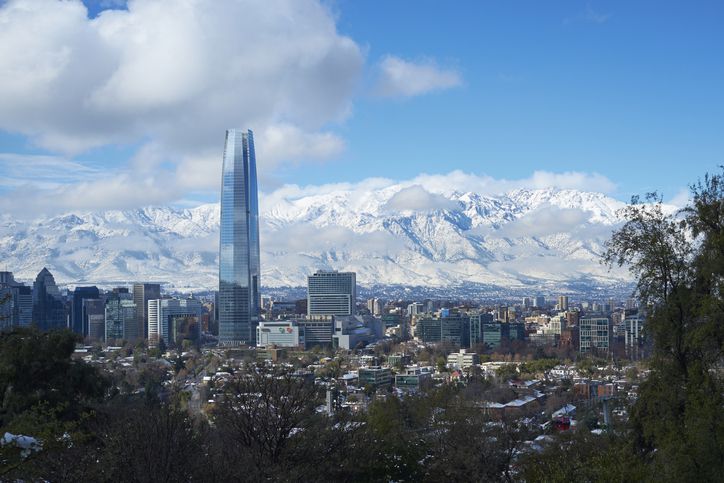
The best time to visit Chile will vary with each traveler because it depends on what you want to do. If you’re interested in outdoor activities, then spring and fall are the best times to go. The weather is mild and comfortable, with temperatures ranging from about 55°F to 75 °F.
However, if you’re looking for warmer weather, then December through March is a good time to go. The temperatures range from about 68°F to 8°F. Keep in mind that these temperatures are just averages. The country has four macro-bioclimates, meaning that the temperatures can get much hotter or colder depending on the region.
The Different Regions in Chile
Chile is a great place to visit all year round, but the best time for outdoor activities is from April to November—regardless of region. The weather during these months is cooler and more comfortable, making it perfect for hiking or cruising around the country. So, no matter what you’re looking for, Chile has the perfect climate for you. Just be sure to pack accordingly and check the weather forecast before you go.
Northern Chile
There are five distinct regions in Chile, each with its own climate. The north of the country is home to some of the most stunning geographies in the world, including the Atacama Desert, the world’s highest geyser and salt flats. That also means that it has some very hot summers and extremely cold winters.
This region of the country is dry nearly year-round, making it perfect for those that hate putting on their raincoats. But then again, if you head up to the Altiplano during the summer months, a raincoat won’t cut it when you have to go through heavy rains and floods.
Central Chile
If you prefer a more Mediterranean climate, then you’ll want to head to central Chile. This region has the most temperate climates with very distinct four seasons. You can experience perfect summer temps hovering around 80°F and cool winters reaching a brisk 40°F high.
There’s also plenty of rainfall to experience in central Chile throughout the year. Beginning at the end of fall, you will encounter frequent storms throughout the winter and spring seasons.
Mountainous Regions
In the mountainous regions of the country in the south and along the eastern border, you have Patagonia and the Andes mountain. The Andes mountain range in the east of the country has a cold alpine climate, while Patagonia’s climate will range from really cold to slightly cool.
At the acclaimed southern end of Chile, you can find jaw-dropping peaks and must-see lakes hidden away at the Torres del Paine National Park. And with the right cruise ship, you can potentially spot some waddling Magellanic Penguins as you pass by Cape Horn.
Even in the middle of the summer, you can expect the climate to remain cold here. And if you end up visiting in seasons outside of summer, then be sure to pack some gear to help protect you from cold winds and frequent rain.
As a general rule of thumb, it’s colder the further south and away from the coast, you go. The best times to visit Patagonia would be during the summer months, from December to March, to experience warmer (but still cold) weather and some strong sunshine.
Subtropical Climate
Lastly, a little over 2,000 miles away from the cost of Chile, you have Easter Island. This region of Chile is home to warm subtropical climates, meaning there’s little to no variation in temperature on any given month. This region is home to some of the best weather ranging between 58 to 79 degrees Fahrenheit throughout the year but is also known to have heavy winds year-round as well.
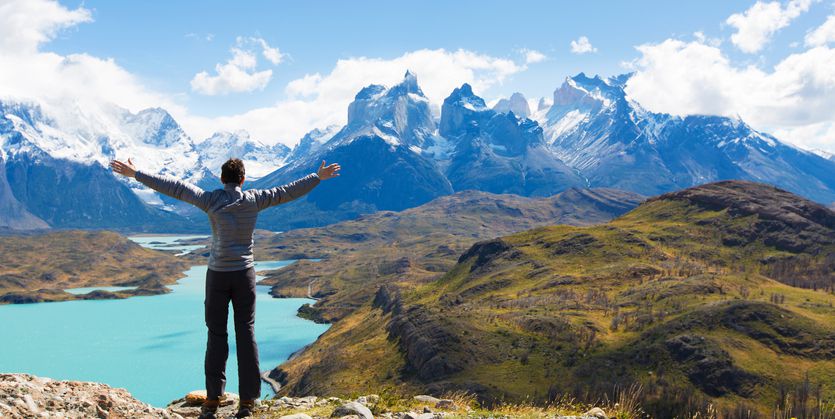
Experience Spring Weather in Chile
Spring is always a welcoming time of the year, and it’s no different in Chile. For example, spring weather in central Chile is mild and typically begins in September and lasts until the end of November. This is when the rains usually start to make an appearance and come in frequent downpours.
So if you’re looking to experience some spring weather in Chile, you may want to avoid this region between those months. Other areas, however, are quite nice during spring. For example, in November, when spring hits Patagonia, the region experiences up to 15 hours of sunlight per day!
And while some areas like Puna Arenas may expect some rain and fog, other areas in the far north will have endless fields of wildflowers blooming. Even in areas like Patagonia that are known for their cool weather, you’ll find temperatures to be pleasant and range between the 60s and 70s.
It’s best to pack layers and prepare some rain clothes for a few rainy days. If you’re visiting the northern and central regions, you’ll want to pack for warmer weather, while trips to the south would benefit from warm coats, hiking boots and gloves.
Experiencing Summer Weather in Chile
Summer is the time of year when most people want to get out and enjoy the weather. And in Chile, that’s exactly what you can do! The summer months of December through March offer visitors temperatures that range from very mild to extremely comfortable throughout the country.
However, you will experience the best weather by heading into the coastal or mountainous regions rather than spending time in the central or northern areas. In the coastal areas, you can expect hot and sunny weather with temperatures hovering around 80°F. The best time to visit during the summer months is when the temperatures are at the highest so you can enjoy warmer waters. However, keep in mind that there is also a high chance of experiencing rain showers through the summer.
Summer temperatures in Patagonia and the Andes mountain range will remain cool, while swimmers can enjoy warm water temperatures between 70°F to 77°F at the beaches of Easter Island.
Regardless of region, you’ll want to bring strong sunscreen to help protect you from the intense summer UV rays on the beach and mountains. If you’re traveling up north, bring shorts and swimsuits and a light sweater to help you stay warm during cooler nights. Visitors to the southern region should still bring warmer clothes like a scarf and down jacket during the summer months.
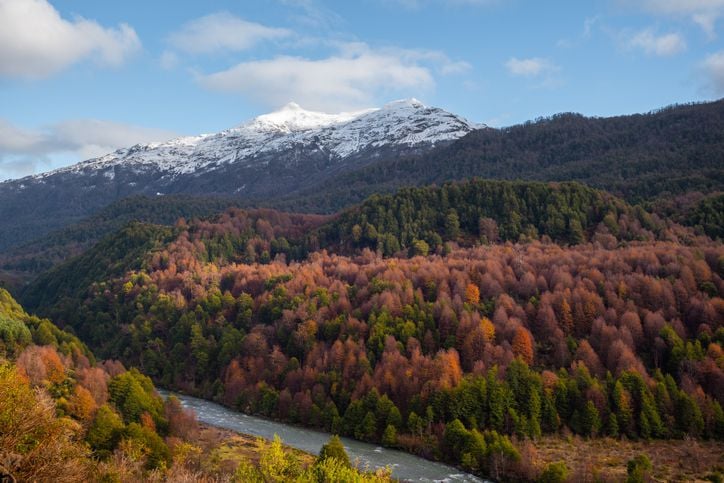
Experiencing Fall Weather in Chile
Fall is a great time of year to visit Chile, as the weather is mild and pleasant throughout most of the country. In September, central Chile begins to feel a shift in the weather with cooler temperatures and more rain. By November, the rains will have intensified, and the temperatures will have decreased even more. This makes fall not the best time to visit this region if you’re looking for dry weather.
Outdoor enthusiasts can experience beautiful fall foliage in the Torres del Paine and other national parks throughout the country with low winds and cool weather. The fall months are truly best experienced by heading into the coastal or mountain regions of the country.
Experience Winter Weather in Chile
If you’re looking for a winter wonderland, Chile is the place to be! The temperatures drop throughout the entire country, and the winter sports enthusiasts start flooding ski resorts.
The amount of sunlight you have will decrease as you go further south. For example, in the north, you’ll have five to six hours of sunlight. In central Chile, you’ll have three to five hours, and in the south, you’ll be limited to two to four hours of sunlight per day.
While you may be able to get away with a light jacket and sneakers in the north and in central Chile, you must be sure to take warm winter clothes when visiting the south. This includes some long johns, wool hats, gloves and a warm winter coat.
Discovering Chile
No matter when you choose to visit Chile, you’re in for a treat with some of the most welcoming weather throughout the year. However, it’s always best to check the weather forecast before your visit, so you’re not stuck out in the cold with a pair of flip-flops, shorts and a tank top!
Whether you’re planning on visiting the Atacama Deserts in northern Chile or wanting to see some Magellanic Penguins in the south, make the most of your trip by booking your Patagonia cruise today!
No comments yet
There are no comments on this post yet.

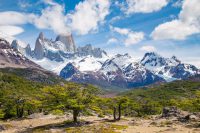
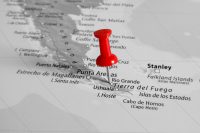
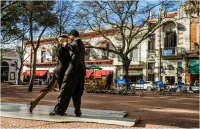
Leave a comment